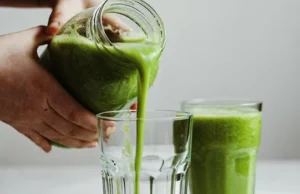The trunk was not the sole trove. She collected thousands of recipes, scissored from newspapers mostly, stuffed in drawers, layered like pommes Anna. She also wrote dozens of her own, many inspired by those from chefs from whom she had taken cooking classes over the years, plus the many that she herself composed for her own cooking school.
Of these recipes in their accumulation, what I remember most is their inviting perfume, of aging paper, mottled with cooking liquids long soaked up, dried and thus kept, and with the inks of both her pens and typewriter ribbons.
Ever since that time, I have been in love with recipes, with reading them, writing them, playing with them.
The recipe is the most fundamental of all things culinary — the foundation of the fundament, as it were. Without it, cooking doesn’t occur. Oh, some cooks (loftily) will state that they “don’t use recipes,” but saying that is like trying to talk without air; it cannot be done. Even in their slap-dash or mish-mosh, what they will call “a little of this and some of that” — there’s their recipe.
There is no cooking — however primitive, simple or straightforward — without a recipe. It need not be written down or even orally passed on, but indeed the history of how recipes have evolved into written, told or preserved things tells us much about the history of cooking itself.
In essence, recipes are stories about food. In the most modern versions, they have beginnings (ingredients), middles (directions) and endings (dinners tonight).
That way wasn’t always so.
In the Latin declension of the verb “recipere” (here meaning “to take” or “to receive”), the verb form “recipe” is the second person singular imperative form. It means—and commands you to — “take,” hence the first word of countless recipes, “Take . . .”
However, the original recipe-makers were what we call pharmacists who fashioned what were called, back to Chaucer’s English of the 1300s, “receipts,” or formulas or mixtures of various medicaments in aim of healing. (A “receipt” for, say, something purchased didn’t come to mean a confirmation of goods sold until the 1700s.)
When you see the “Rx” outside a CVS or a Walgreens, you’re seeing shorthand for the word “receipts”—the first “recipes”.
Recipes for cooking as we know them—a list of ingredients, their measurements and directions for their preparation—are a modern phenomenon, from only the mid-1800s. Before then, recipes in fact were short stories, wee narratives aimed at those who both already knew cooking and were familiar with the dish described.
Look at even this simple recipe for “A buttered apple pie” from Amelia Simmon’s “American Cookery,” our country’s first cookbook, published in 1796. It reads like the shortest of stories.
“Pare, quarter and core tart apples, lay in paste, cover in same; bake half an hour, when drawn, gently raise the top crust, add sugar, butter, cinnamon, mace, wine or rose-water.”









